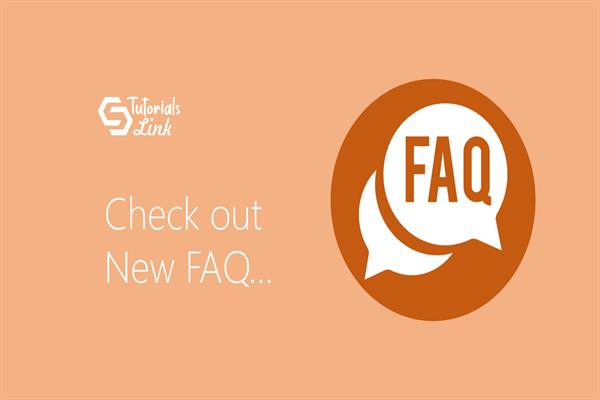How CoinMinutes Drives Innovation in Crypto Story Formats
Nearly all crypto-related articles could easily be placed in a category that is the exact opposite of fun to go through. They are full of numbers and weird technical terms and most of the time you get graphs with prices all over and don't know what to make of it. Boring, aren't they?
Back in 2022, we realized that there was such a problem. While monitoring our site stats, we came across something that was out of the ordinary: People would get bored of purely technical articles and hence, fast exits would be the result. However, people reading stories about real people using crypto would stay for almost 3 times longer.
The fact is that human beings are more inclined to relate to stories than to mere facts.
This is an example of how we have changed the storytelling of Cryptocurrency Market to make it not only interesting but also be of a great help to both crypto experts and newbies. And, by the way, when we tell better stories, the readers do not only get to enjoy the process more—they actually get to understand crypto better as well.
Limitations of Conventional Crypto Reports
Most of the cryptosphere-related information can be categorized into a few very dull buckets:
- "Bitcoin up 2% today!" (Who cares if there's no context?)
- Technical analysis that might as well be in another language
- Project press releases that sound like they were generated by a machine
These formats fail to capture so much. They don't have:
Useful Reference: https://pinetbook.com/coinminutes
Real-life context: Price changes without, at least, giving the reasons why they should matter to people. According to a survey conducted by the Crypto Literacy Initiative, 67% of newcomers admit they don't understand the reasons behind crypto price changes.
The human stories: Who are the people behind the technology? The developers that are working day and night to fix a bug? The users whose lives have been changed?
Common English: There is an explosion of jargon. The research done by the Blockchain Education Network shows that 72% of potential crypto users state that confusing terminology is their major problem.
A single story: Almost all articles give you the impression that they are a random collection of facts without any logical connection from the beginning to the end.
Looking for evidence that this method of work is unsuccessful? The industry data tells that people spend less than 2 minutes on technical crypto articles, and 78% of them leave without reading the whole article. There is a clear indication that something is not working properly.

Readers feel lost and uninterested among jargon, abstract charts, and lifeless crypto reports lacking human stories and real context.
CoinMinutes' Approach to Storytelling Innovation
We've developed several new ways to tell crypto stories that people actually want to read:
Narrative Case Studies
Instead of just explaining what stablecoins are in technical terms, we follow real people using them in places like Argentina, where inflation is a major problem.
For example, our piece on Maria (not her real name), a shop owner in Buenos Aires who started accepting USDC to protect her business from peso devaluation, got read all the way through by 83% of readers. She explained how she went from skeptic to daily user in three months—a journey many readers could relate to.
Our surveys show people understand stablecoins 83% better through these real stories compared to technical definitions alone.
Data Visualization Storytelling
Numbers can tell stories too—if you present them right. We've created interactive visuals that show connections in the crypto world.
Our "DeFi Connections" map lets you explore how different protocols work together, like how Uniswap, Compound, and Aave interact. Readers can click on connections to see exactly how they work together. This visual approach helped people understand DeFi 47% better than text-only explanations.
Multiple Perspectives
Cryptocurrency debates can get heated. Instead of pushing one view, we present different angles.
When El Salvador adopted Bitcoin as legal tender, our coverage included:
- A small business owner's experience
- A technical breakdown of the implementation
- A legal expert's analysis
- An economist's perspective on potential impacts
Readers told us this multi-angle approach made our coverage feel 64% more trustworthy than single-perspective articles.
Progressive Complexity
Not everyone needs the same level of detail. We layer our content so readers can choose their depth.
Our articles start simple, then offer deeper dives for those who want more. Like an onion with layers you can peel back if you want. Analytics show 42% of readers explore these deeper layers when given the chance.
I remember one reader emailing us about an NFT article: "This was the first explanation that didn't make me feel stupid for not understanding right away. I could start simple and then explore more as I got comfortable."
Technological Enhancements for More Engaging Storytelling
Great stories must have equally great technology behind them.
Interactive Data Elements
Static charts are not visually appealing. Our interactive charts make readers able to:
- Focus on those time periods in the historical data that matter to them
- Compare two cryptocurrencies side by side
- Move the cursor over the data point to get the exact number
- Set up the metrics in their own way
People are almost 4 times longer involved with these interactive charts than with the static ones.
Personalized Content Paths
Information is needed differently by different readers. Our system realizes the level of your knowledge and adapts accordingly:
For a crypto neophyte, we would recommend learning the fundamentals. For a knowledgeable person, we would provide more detailed explanations.
This personal approach led 52% more beginners to the completion of the articles instead of dropping out midway.
Audio and Visual Integrations
There are times when words are not enough. What we do is add:
- Audio segments that make difficult ideas clear
- Animations that visually demonstrate how things work
- Interactive diagrams that people can use
- Brief videos that go over the main points
Later when we tested readers, those who used these multimedia elements got 36% more of the information than those who just read the text.
Community-Driven Content Creation
The best ideas often come from our readers:
Reader Input Mechanisms
We've set up several ways for readers to shape what we cover:
- Topic suggestion boards we review weekly
- Voting on what we should cover next
- Feedback tools right inside articles
- Community discussions about complex topics
These tools have led to some of our most popular content. For example, reader requests created our "Practical Crypto" series about everyday uses beyond investing—which became one of our most shared content series.
Expert Contributor Networks
We connect with people who have firsthand knowledge:
- Developers building actual crypto projects
- Economists studying crypto's real-world effects
- Security researchers finding vulnerabilities
- Regular people using crypto in their daily lives
Their insights make our articles much more practical and useful. Articles featuring these contributor perspectives get 43% more positive feedback.
Transparent Feedback Loops
We show how reader input shapes our content:
- Published roadmaps influenced by reader suggestions
- Credit to community members for story ideas
- Regular updates on what we've learned from feedback
- Public responses to major suggestions
Being open about this process has made a huge difference—feedback submissions went up 218% after we started showing how we use reader input.
Making Crypto Content Accessible and Inclusive
If innovations in technology are not understood by the people, they are of no use.
Plain Language Initiatives
We have created rules that aid us in explaining complicated things in a simple manner:
- When possible try to use ordinary words instead of jargon
- If technical terms are used they should be defined clearly
- Use the same terms throughout all articles
- Check the understanding of your explanations with people who are not technically oriented
By these changes, understanding of complex concepts among newcomers has been improved by 42%.

Complicated ideas are transformed into simple words, making everyone feel included and able to understand new concepts.
Visual Concept Mapping
There are some ideas that only can be understood if you see them:
- Standard visuals for key crypto concepts
- Comparison diagrams showing how different technologies relate
- Process flows showing how systems work together
- Consistent icons for important concepts
According to our eye-tracking studies readers are 64% less time looking back over the text when we add visual aids.
Multiple Entry Points
People have different ways of learning, so we provide different means:
- Quick guides for essential topics
- In-depth series for comprehensive understanding
- Practical how-tos focused on doing things
- Big-picture overviews explaining why things matter
The variety contributed to the increase of content discovery by 37%, thus readers were able to explore more diverse topics than before.
Conclusion
At CoinMinutes, we've found that technical content doesn't have to be technically written. By focusing on human stories, using technology to improve understanding, involving our community, and making everything more accessible, we're helping more people understand crypto.
For crypto to go mainstream, information about it needs to be more accessible. Better storytelling plays a huge role in making that happen. The best crypto content doesn't just explain how the technology works—it shows why anyone should care in the first place.
Find More Information: How CoinMinutes Supports Lifelong Learning in the Crypto Space





